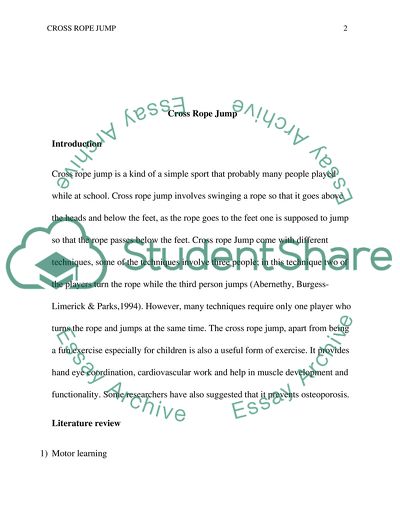Cite this document
(Cross Rope Jump Term Paper Example | Topics and Well Written Essays - 2000 words, n.d.)
Cross Rope Jump Term Paper Example | Topics and Well Written Essays - 2000 words. Retrieved from https://studentshare.org/sports-and-recreation/1876687-teaching-someone-a-new-skill-my-skill-will-be-cross-rope-jump
Cross Rope Jump Term Paper Example | Topics and Well Written Essays - 2000 words. Retrieved from https://studentshare.org/sports-and-recreation/1876687-teaching-someone-a-new-skill-my-skill-will-be-cross-rope-jump
(Cross Rope Jump Term Paper Example | Topics and Well Written Essays - 2000 Words)
Cross Rope Jump Term Paper Example | Topics and Well Written Essays - 2000 Words. https://studentshare.org/sports-and-recreation/1876687-teaching-someone-a-new-skill-my-skill-will-be-cross-rope-jump.
Cross Rope Jump Term Paper Example | Topics and Well Written Essays - 2000 Words. https://studentshare.org/sports-and-recreation/1876687-teaching-someone-a-new-skill-my-skill-will-be-cross-rope-jump.
“Cross Rope Jump Term Paper Example | Topics and Well Written Essays - 2000 Words”, n.d. https://studentshare.org/sports-and-recreation/1876687-teaching-someone-a-new-skill-my-skill-will-be-cross-rope-jump.


